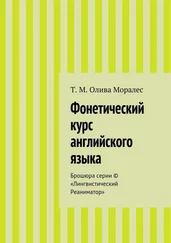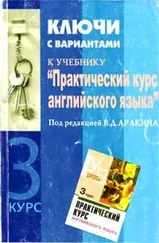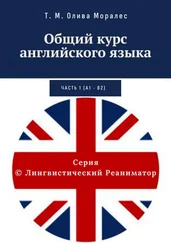dog waiting patiently with turned head; the ambling flock; the old silent trees; the fat clouds reeking moisture ...
Some years later, when I went to London to study pictures, I saw "The Cornfield" and many others by Constable, and my first
impressions were confirmed. In his grasp of the stable, one might almost say formidable, repose that man feels in the presence of
nature, and in communicating the spiritual contentment induced by companionships with nature, Constable is the master of the
English school.
E
Constable never travelled outside England. He was slow to develop as an artist, and slow to become famous. In all these things
he was the very opposite of Turner. If he was Wordsworthian in his attitude to nature, Turner was Byronic. The elements which seem
so domesticated in Constable's pictures are at their most extreme and battling in Turner's grandest pictures. The large "Fire at Sea"
depicts man's hopeless fight amid storm and disaster. Human beings are literal flotsam in a raging sea. Turner himself actually
experienced the "Snowstorm: Steamboat off a Harbour Mouth" in which wind and snow and spray sport with the unfortunate
steamboat until it is barely visible except for a straining mast. There is a tremendous exhilarating terror in this moment when all
nature's forces are unleashed. Something of the same drama is in "Rain, Steam, and Speed", where the glowing train forces its way
over the high viaduct through the driving mist and rain — and here man is winning through, thanks to the newly invented steam
engine. But Turner's intense receptivity to nature's moods made him able to capture also moments of utter tranquility. In the "Evening
Star" there is nothing but the merging of sea and sky, day and night, as evening slowly sucks the colour from things; and only the
diamond point of the single star shines out, caught tremblingly on the dark water. The same poignancy hovers about "The Fighting
Téméraire" in which between dusk and day an old ship is tugged to its last berth. The ghostly hulk floats over the calm glassy sea,
and the sun sinks like a bonfire in the west, seeming a symbol of the life that is ended, stirring us to a quite irrational sadness for days
gone by. Such is Turner's poetry.
10.Select a reproduction of a portrait painting and discuss it according to the following outline:
1. The general effect. (The title and name of the artist. The period or trend represented. Does it appear natural and spontaneous or
contrived and artificial?)
2. The contents of the picture. (Place, time and setting. The age and physical appearance of the sitter. The accessories, the dress
and environment. Any attempt to render the personality and emotions of the model. What does the artist accentuate in his subject?)
3. The composition and colouring. (How is the sitter represented? Against what background? Any prevailing format? Is the
posture bold or rigid? Do the hands (head, body) look natural and informal? How do the eyes gaze? Does the painter concentrate on
the analysis of details? What tints predominate in the colour scheme? Do the colours blend imperceptibly? Are the brushstrokes left
visible?)
4. Interpretation and evaluation. (Does it exemplify a high degree of artistic skill? What feelings, moods or ideas does it evoke in
the viewer?)
11. Because of their special environment, museums and picture galleries offer the kind of conditions that allow a student to experience the
intrinsic qualities of the art object. The atmosphere of museums evokes marvel. When our emotions are roused, we are more sensitive, we openly
explore, make discoveries, and ultimately are more receptive to the learning experience. Enlarge on the benefits of museums and picture galleries.
12. Give an account of your own visit to a picture gallery.
13. Communication Work:
a) Get your fellow-student to give you information about his/ her favourite museum. Try to get as many details as you can.
b) You are a novice teacher getting ready to take your charges to the Tretyakov Gallery/the Russian Museum/the Hermitage. Ask
for advice and suggestions from an expert.
c) Persuade your partner to agree with your opinion that life is made much more colourful if you regularly visit art exhibitions.
d) One of you has recently returned from England. The other is questioning him/her on the impressions of the National Gallery/
the Tate Gallery.
e) Tfre great value of visiting a museum and studying works of art first-hand is that one becomes aware of the qualitative differ -
ence between original art and photographic reproductions. Work in pairs and enlarge on this statement.
14. Read the following dialogues. The expressions in bold type show the WAYS ENGLISH PEOPLE EXPRESS LIKES AND DISLIKES. Note
them down. Be ready to act out the dialogues in class:
— Isn't that lovely?
— What a dull picture!Why, there's no colourin it.
— That a dull picture!Why, it's beautiful, it's perfect, if it had
any more colour it would be wrong.
— But I don't think so. Each to our own opinion, dear Simon.
— ... Forgive me, darling. To lose my temper because you didn't likethat picture, how childish!
— Yes, you were funny; I have never seen you like that before, quite a baby, Simon. If I really thought you liked that thing,
Simon, I'd begin to wonder at your taste.
— But I did like it. I haven't seen a picture for years I have liked so much.
They paused before the prizewinner.
— I think that one's got something.For once I believe that I'd agree with the judges.
— I hate it like hell.
— What don't you like about it?
— Everything. To me it's just phoney. No pilot in his senses would be flying as low as that with thermo-nuclear bombs going off
all around.
— It's got good composition and good colouring.
— Oh, sure. But the subject's phoney.
15. Discussing and evaluating things often involves stating your preference. Here are some ways of expressing likes and dislikes. Notice that you need to
be very polite when criticizing things in English — even speaking to someone you know quite well.
Expressing likes
I like ... very much indeed.
I (really) enjoy...
I've always liked/loved ...
There's nothing I like/enjoy more than ...
I'm (really) very fond o f . . .
... is (really) terrific/great, etc.
It's too lovely for words. Expressing dislikes
(I'm afraid) I don't like ...
I've never liked ..., I'm afraid.
... is not one of my favourite ...
I (really) hate...
I think ... is pretty awful/really unpleasant.
I'm not (really) very keen on ...
... is ghastly/rubbish.
I can't say ... appeals to me very much.
I must say I'm not too fond of...
16. Work in pairs, a) Find out each other's feelings about these subjects. Use the clichés of likes and dislikes:
1. An art book for a birthday present. 2. Snapshots from a family album. 3. Pupils' drawings for the school exhibition. 4. Your
grandma's picture postcards. 5. A guided tour of a museum. 6. Landscape painting. 7. Impressionism. 8. Genre painting. 9. Animals in
art. 10. Still life.
b) Report your partner's opinion to the students in another group.
17. Read the following text. Find in it arguments for including popular arts in the art curriculum and against it. Copy them out into two
Читать дальше
![Владимир Аракин Практический курс английского языка 3 курс [calibre 2.43.0] обложка книги](/books/402486/vladimir-arakin-prakticheskij-kurs-anglijskogo-yazyk-cover.webp)











